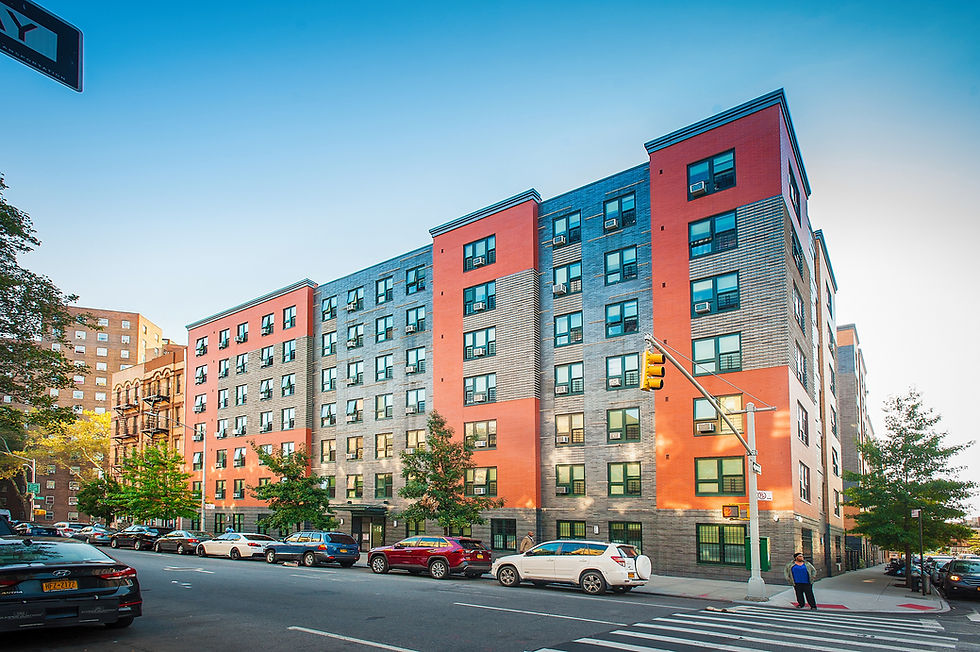Enterprise Green Communities 2026 Draft: What You Need to Know
- Lucas Giacalone

- Jul 30
- 3 min read
Deadline for comments: August 27, 2025

About every five years, the Enterprise Green Communities Criteria (EGCC) is updated—something that has big implications for NYC and NYS affordable housing projects, since HPD and HCR align their Sustainability Guidelines with EGC certification. The full draft of the 2026 Criteria is now open for public comment.
Whether you're a developer, architect, engineer, or housing advocate, this is your chance to weigh in. The proposed updates are wide-ranging, and your feedback can help ensure the standard stays practical, impactful, and aligned with the realities of affordable housing.
So, what’s new?
The 2026 draft brings a mix of refinements and ambitious climate goals. Some items have been simplified, others expanded, and there’s a stronger focus on long-term energy performance, resilience, and health.
Here are a few major shifts:
Streamlined energy performance pathways, with continued support for Certification Plus.
Stronger resilience criteria, tackling risks from extreme heat, floods, high winds, and wildfires.
Introduction of “wayfinding themes”—energy, health, and resilience—to help teams prioritize.
Key Updates by Section
(Notes: Categories remain the same as in the 2020 program, and the updated NYC Overlay hasn’t been released yet.)
Section 1: Planning
New mandatory criteria for climate risk and health action plans—already aligned with HPD and HCR.
Focused on documentation and planning—not major cost drivers, but adds structure early on.
Section 2: Location + Neighborhood Fabric
Removed: compact development criteria (previously an easy point).
Added: points available for community-serving spaces like job training centers, educational facilities, or clinics.
Section 3: Site Improvements
Now includes criteria previously found elsewhere—like heat island mitigation and light pollution controls.
New traffic safety criteria may be a quick win for NYC projects.
Section 4: Water
No notable changes here.
Section 5: Energy
Required “Zero Emissions Over Time” plan (projects must show a path to zero emissions within 20 years).
Note: Compliance enforcement not planned—this is about long-term planning.
Rehab projects must still model against code baseline, not existing energy use.
Optional criteria added for peak demand control and passive survivability (for resilience during outages).
EV charging is now mandatory for new construction and substantial rehabs (waivers possible if no parking).
Section 6: Materials
Streamlined section, but now requires training on low-VOC materials and indoor air quality for both design teams and contractors.
Section 7: Healthy Living Environments
Dehumidification is now mandatory, even in colder climates (could present challenges).
Noise reduction criteria also moved from optional to required.
Section 8: Operations, Maintenance & Resident Engagement
No changes.
Want to weigh in?
You can review the draft and submit public comments by August 27, 2025. Your input matters—this is your chance to help shape how the next generation of affordable housing is designed and built.
Want to compare the 2026 draft to the current EGCC 2020 version? Click here.
What This Means for KOW Clients
At KOW Building Consultants, we help affordable housing projects across the country meet Enterprise Green Communities criteria—especially those aligned with HPD, HCR, and NYSERDA. We’re actively reviewing the 2026 draft and submitting formal comments based on the needs of our clients and project partners.
Here’s how we can help:
Full-service EGC 2020/2026 support, from Prebuild to Postbuild.
Strategic guidance on Certification Plus, electrification, and resilience planning.
Integrative design support to maximize energy savings and occupant health.
Have questions? Need help submitting comments or preparing for compliance? Let’s talk.




Comments